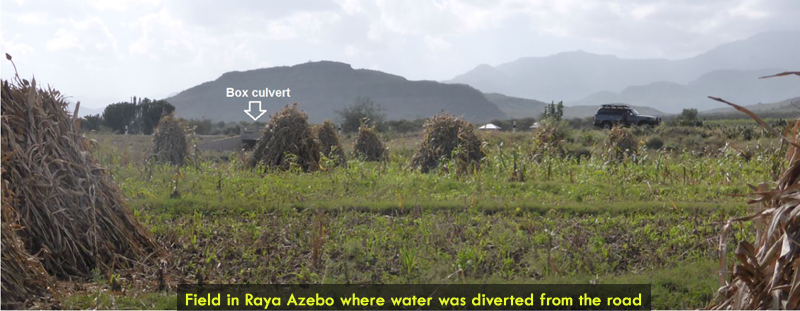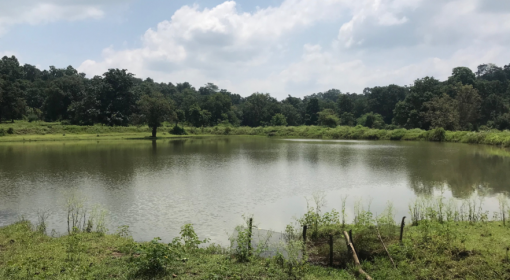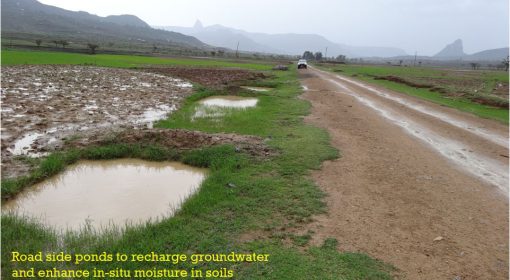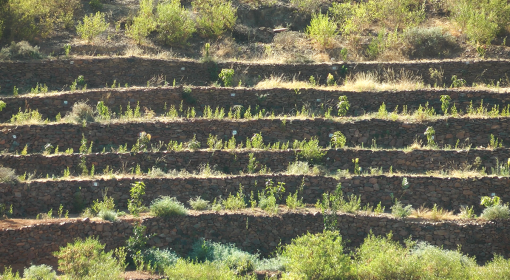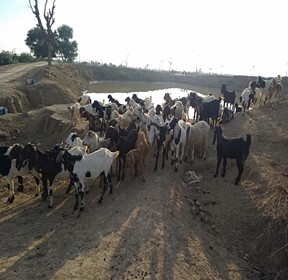Posted by Marta Agujetas Perez
November 25, 2015
This year’s rainy season in Ethiopia made a very timid appearance in large parts of the country. In many districts of Amhara and Tigray where it usually rains for three months (mid-June to mid-September), there was no significant rain this year. Ponds that usually hold water for 3-6 months are already dry in November (Figure 1 and 2). Experts speak of drought. Some fear famine. Many farmers in the eastern and southern parts of Amhara and Tigray didn’t manage to get any harvest.
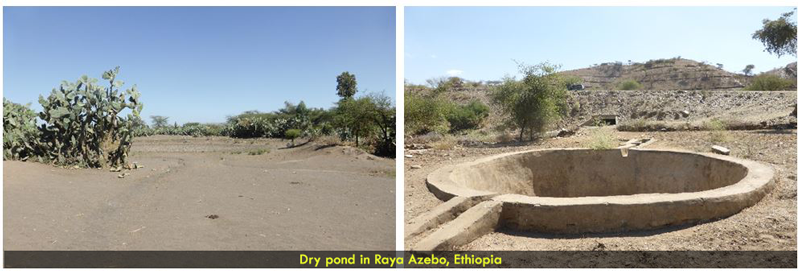
The consequences are not known yet. A main concern at the moment is the livestock. The price of cattle has dropped from 6,000 to 600 Birr in some areas as it is hard to keep the animals alive. This is a do or die challenge for agro-pastoralists. They fear they will not be able to feed their cattle in the coming period since fodder is not available from their farms.
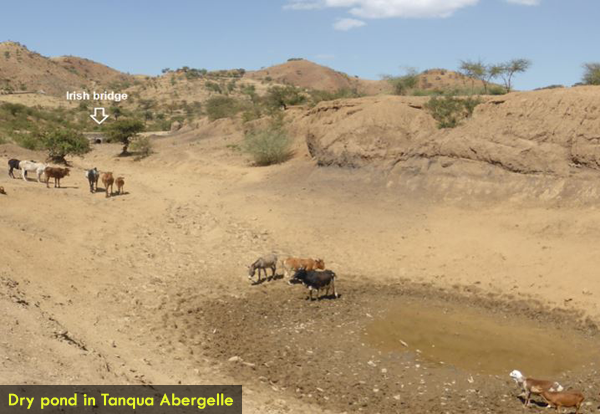 Fortunately, the Government anticipated the sharp decline in rainfall due to El Nino oscillation way in advance. The regional governments of Tigray and Amhara Regional States implemented a climate resilience campaign in July, telling farmers and development agents to capture every drop of water. The government also mobilized excavators and other machinery to build canals and ponds to harvest water from catchments and roadsides. The pond shown in the image on the right was built by the local government of Tanqua Abergelle woreda to harvest water from an Irish bridge. This pond is now providing water for livestock where otherwise there wouldn’t be any other source of water. Moreover, the government also distributed early maturing seeds of sorghum and other crops. The worst affected farmers are also receiving concentrated feed for their livestock. All these measures are alleviating the drought so far, and combined with the mobilization of grains from surplus areas will probably help avoid a famine.
Fortunately, the Government anticipated the sharp decline in rainfall due to El Nino oscillation way in advance. The regional governments of Tigray and Amhara Regional States implemented a climate resilience campaign in July, telling farmers and development agents to capture every drop of water. The government also mobilized excavators and other machinery to build canals and ponds to harvest water from catchments and roadsides. The pond shown in the image on the right was built by the local government of Tanqua Abergelle woreda to harvest water from an Irish bridge. This pond is now providing water for livestock where otherwise there wouldn’t be any other source of water. Moreover, the government also distributed early maturing seeds of sorghum and other crops. The worst affected farmers are also receiving concentrated feed for their livestock. All these measures are alleviating the drought so far, and combined with the mobilization of grains from surplus areas will probably help avoid a famine.
During this drought road water harvesting has proven to be a vital measure to increase resilience. Examples from Raya Azebo show how, thanks to the supplemental water from the road, some farmers have managed to have a modest harvest, mainly of sorghum. The picture below was taken this month in a field were water is diverted from a box culvert in Raya Azebo. The surrounding field s that do not receive road run-off were completely bare.
All this bears testimony to a country getting more and more resilient – the 2015 drought according to experts is comparable to the 1984 and 1988 ones that triggered unspeakable human misery in Ethiopia. This drought so far has triggered a huge collective coping effort. There is still an enormous battle ahead, but many of the first fights have been won.
